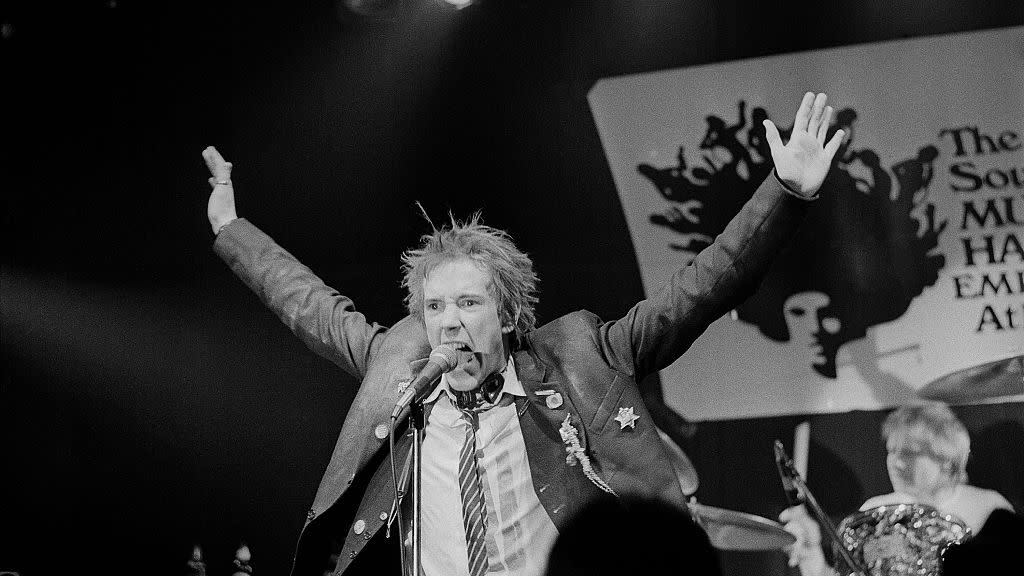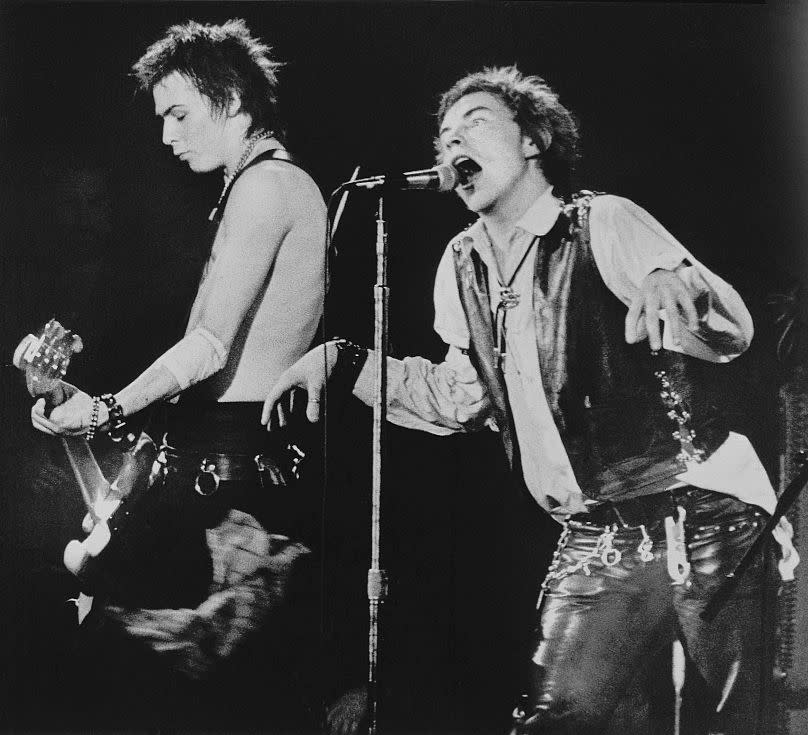Culture Re-View: How the Sex Pistols defined punk from their first gig

- Oops!Something went wrong.Please try again later.
- Oops!Something went wrong.Please try again later.
On this day nearly half a century ago, in London’s Saint Martin’s School of Art common room, a scraggly group of teenagers came together for the first gig of one of punk’s most iconic bands.
The band was, of course, the Sex Pistols. From their live debut in 1975 to the band’s dissolution in January 1978, the Sex Pistols made a short-lived but indelible imprint on cultural zeitgeist. Today, their look is still at the core of any “punk” aesthetic.
Culture Re-View: How a male student in 1898 created cheerleading
Culture Re-View: How Laika become the most famous dog outside of Earth
Was the entire project an industry plant? Had the punk aesthetic been entirely curated? What really happened between bassist Sid Vicious and his girlfriend Nancy Spungen?
All of these questions are still at the forefront of any punk fan’s minds when the band’s name are mentioned. Yet, at that gig in a north London art school, the germination for the group’s shapeshifting mythos hadn’t been fully formed. Vicious – arguably the band’s most notable member – wouldn’t even join until late 1977.
At the time of the gig, it was still Glen Matlock on the bass. He had joined the band at the direction of Malcolm McLaren, the Sex Pistols’ manager. To understand the story of the Sex Pistols, it’s key to appreciate the role McLaren had in forming the band.

McLaren worked alongside Vivienne Westwood at a clothes shop in Chelsea. By 1974, the shop was named SEX and it was known as a hangout for people interested in the nascent punk rock scene. Helped by Bernard Rhodes – who later introduced the members of The Clash to each other – McLaren found a new lead singer for the band, a role which founding member Steve Jones wasn’t comfortable with.
The pair came across John Lydon. Lydon was an immediate fit for the manager who was looking for someone to encompass the anarchic spirit and look of punk rock’s societal apathy. Rechristened as Johnny Rotten, Lydon joined Jones, Matlock and Paul Cook on drums.
Before Rotten was found as the lead singer, McLaren played with ideas of importing New York Dolls’ frontman Sylvain Sylvain for the project. Despite the somewhat artificial way the band was formed, the Sex Pistols were nonetheless created out of a genuine ambition to create something aggressively countercultural to the popular music of the day.
When the Sex Pistols hit the stage for the first time, it was in support of rock n’ roll band Bazooka Joe – whose bassist went on to become glam rocker Adam Ant. The punks played a set mostly made up of covers from bands like The Monkees and The Who, as well as their own single ‘Seventeen’.
The next year, Ramones would release their debut album and The Clash would form. But before all that, in a small college room, one of the bands at the genesis of rock’s most visually distinctive movement made their tentative first steps.

